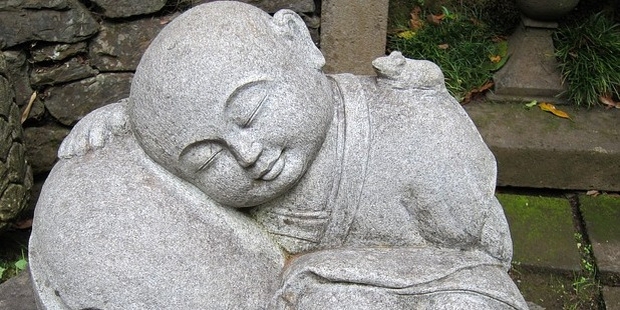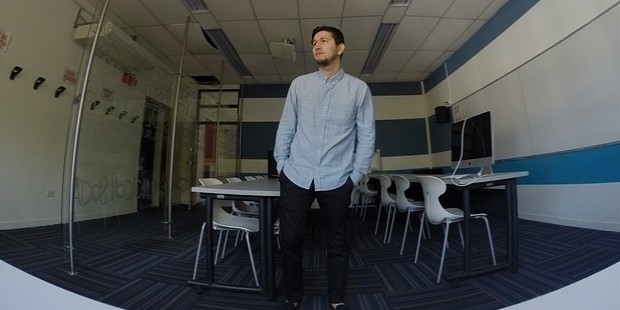Mindfulness & You - Your Way to Seeing Anew

Mindfulness has become a buzz word in recent times. Lots of people are talking about it and this leaves the rest of us wondering what on earth it is. As children we are often told to be careful, usually in a less than positive tone, when we are about to do something that perhaps we shouldn’t. To take care - don’t injure yourself or others, or make a mess! Yes, we know what it is to be careful. So what then does it mean to be mindful, a direction we seldom give to children, though perhaps should? To be full of mind is a slightly less obvious concept, it does not mean being jam packed with knowledge or highly intellectual.
It relates to paying attention to what we do, to have presence of mind. To live in such a way as to concentrate fully on the task at hand. Simple, right? Yes it can be, for five minutes or so while we give concentrating our full attention. However to live a mindful life can be more difficult than it appears at first but with the attractive benefits which can arise, it can be a worthwhile practice to try out.
Benefits
1. Combat Stress

Modern living has become very stressful, not only do we place increasing demands upon ourselves and others, but the environment in which we live is a constant whirring of technology and media. We live in a constant state of information overload. Add to this a stressed state of mind where the ‘to-do lists’ we keep stored in our head are joined by an influx of negative thoughts; the what if’s, how comes and why me’s. A mindful state of being can help you to quieten your mind and get on with the task at hand, making life a little less stressful and more enjoyable.
2. Know Yourself Better

Mindfulness can help you to notice what it is that you are really feeling in a given moment. Rather than living on autopilot you realise how to react to given situations and armed with this knowledge you can take steps to implement change, if you feel you need or want to.
3. Easier Decision Making

A clearer head which comes with sustained mindfulness practice can allow you to make decisions in a less cluttered mental space. With the stress removed from the situation and the increased self-awareness you have cultivated decisions are that bit easier to make.
4. Gain control over Ruminating

Has anyone ever told you that ‘pressure is for tyres’? Well, they’re right, and I shall add that ruminating is for cows. Yes, people do get put under pressure and sure as day, we ruminate too. However, going over and over a problem rarely if ever helps us to reach a viable solution. Instead we get even more stressed about it while multiplying the possible negative outcomes exponentially in our heads. Ruminating is not useful so anyway that we can stop the mouse in our heads from running on the ruminating wheel, the better.
What is it?
Mindfulness is accepted by professional psychologists, holistic practitioners and spiritual teachers as a useful tool in leading a healthy, stress free life. In his book, Positive Psychology, Alan Carr lists some of the benefits of mindfulness meditation as follows:
In the short term it leads to a reduction in physiological arousal and a positive mental state. In the longer term it leads to better health. Short-term physiological changes include reduced heart-rate and respiration rate, reduction in rate of spontaneous skin conductance fluctuations, reductions in cortisol levels… In the long term, meditation can enhance a range of psychological functions including cognitive functioning, creativity, empathy, happiness, optimism, and self-compassion. In the long term, meditation can also be helpful in the management of conditions such as hypertension and chronic pain, and psychological conditions such as anxiety and depression. (2011, .pp 263-264.)
1. Awareness

In its most basic form mindfulness is a state of mind where we consciously make an effort to pay attention to what is going on around and inside us. There is one further important element, however, we must pay attention in a non – judging way. This means that we can observe that we don’t feel good about ourselves but stops short of making a judgement on that realisation.
2. Acceptance

We allow the feelings to come, to be as they are and to accept them in that moment. It is not that we are ignoring our feelings, but just accepting them as they are and letting them be. In this state of mind we are not carried away by our feelings, thoughts and emotions, but can become aware of how we are feeling in a given moment. This acceptance of emotions can be therapeutic in itself. In Mindfulness, Acceptance and Positive Psychology the authors, Kashdan, Ciarrochi & Harris go on to suggest that because of the nature of mindfulness it ‘is likely to be useful for everything from full-blown psychiatric illness to enhancing athletic or business performance’ (2013, pp.2 – 3). Handy, huh?
3. Living in the moment

While we are allowing ourselves to experience how we are feeling, what we are doing etc. in a given moment, we are not focussing on the future. Possible outcomes, positive or negative do not have a chance to form. This is where stress and ruminating kick in and by staying in this very moment, the speculation is stopped before it begins.
How do I do it?
1. Meditation

Motivate Yourself for Meditation
As Alan Carr notes, meditation is one of the most widely recognised methods of practising mindfulness. It involves taking a few minutes of quiet time out of your day to focus on you and your needs. This is usually done in the morning on rising, or in the evening before bed. Of course, depending on your schedule, you can do it at any time that suits you. One of the simplest methods of mindfulness meditation is to sit or lie in a quiet room and to focus on your breath. Though it is ‘simple’ in theory, the practice can be found to be quite difficult as we come to realise just how noisy our own minds are. However, with practice it becomes easier to keep your mind on the breath, inducing a state of relaxation and quietening the busy mind.
2. Eating

Have you ever had a cup of tea or coffee, or perhaps a nice muffin or other treat which you were looking forward to sitting down and enjoying only to find that you don’t remember eating it? I have done this countless times. You might even be prompted to ask ‘who ate my muffin?’ when the reality is that you consumed it without even realising it. Although you had been looking forward to it, your mind was so busy with other thoughts that you didn’t notice that you were chewing and swallowing. Modern society is so fast that many people eat ‘on the run’, not even sitting to eat. We grab a coffee and a sandwich on the way to a meeting and take bites in between business talk. This behaviour doesn’t allow us to enjoy our food. If we are eating mindlessly then it follows that we are not listening to our bodies and do not realise when it is telling us that we have had enough. This makes it easy to over eat.
Mindful eating involves paying attention to what you are eating. Use all of your senses to take in the food before you eat it. How does it look, smell, feel? Does it sizzle on your plate? And finally, most importantly, how does it taste? If we employ all of our senses when we eat we will have a much more satisfying dining experience and return to our daily lives refreshed and feeling as though we have actually had a break.
3. Exercise

Keeping your body fit is an important part of any health regime, but the results are not just physical. I’m sure we have all had experiences when we feel like leaving the vicinity to ‘get some air’ after a stressful conversation or row. When we do this we are getting exercise but also withdrawing from a stressful environment. This is what we do when we exercise on a daily basis too. When we spend an hour in the gym that is our time to take care of our bodies, but our minds are also on a break too. It is possible to day dream away the time on a cross-trainer, but you will find that if you actually make a habit of really concentrating on the actions that you are performing, not only will your body get a better workout, but the time will go faster and you will be fully, mindfully experiencing the activity.
4. Daily Routines

It is not only eating and exercising which can be performed mindfully. Our day is ripe for the picking when it comes to finding experiences which we can undertake mindfully. These include washing the dishes, or clothes, hoovering, typing, even activities as simple as walking can be tuned into, revealing the actions which we perform without thinking on a daily basis. Paying attention to the way our bodies work can enhance our appreciation of them, while observing the world and how we perform in it can boost our joy of the simple things in life.
5. Sleeping

Sleep is a very important part of all of our lives. Though we may not sleep mindfully, setting up the correct conditions for a restful night’s sleep are important. Parents will know the routines that go into preparing a young child for sleep. They won’t eat before bed, but may have a little drink of warm milk. They won’t be playing exerting games beforehand, a bed-time story helps to get them into the frame of mind of sleep. Sometimes they may have a bath beforehand.
If we take all this trouble to ensure a good night’s sleep for our children, it follows that we should take the same self-care for ourselves. Limit strenuous activity just before bed time and shut down electronic devices at least fifteen minutes before you try to go to sleep. Employ soft lighting to help your body realise it’s nearing time to sleep. If you find that reading a story can help you to drift off then read a couple of pages of a non-stress inducing book before bed. If you are incorporating mindfulness meditation into your day it can be a part of your daily wind down before bed too.
Where can I Learn how to Practice Mindfulness Effectively?
1. Books

Books are my personal ‘go to’ solution for almost any topic that I want to learn more about. There are a number of leading mindfulness teachers who have published books aimed at the novice which are easy to understand and practical in terms of implementing the tools. A browse through the shelves at your local library or bookshop may furnish a book that resonates with you and can act as a guide in your own journey towards mindfulness.
2. Audio Tapes

Audio tapes can be a nice alternative to a book for those times when you feel exhausted and unsure if you have the energy to concentrate on text. The range of listening material available on audio has greatly improved over the last number of years and it is particularly useful for learning a skill such as mindfulness. The audio tape can be listened to in advance of your meditation session, or may have practice sessions included within it. The added benefit of audio books is that you can listen to them on the go.
3. Classes

As mindfulness has grown in popularity, so too have the number of classes teaching the practice. If you are interested in learning more about mindfulness while getting out of the house and meeting new people this could be just the solution for you. Evening classes and day seminars are run in many different schools, community centres etc. Why not check out your local listings to see where your nearest classes are?
4. Mandalas

If you haven’t encountered the word before, ‘Mandalas’ can sound like a very complicated notion. When really it couldn’t be simpler. The word Mandala itself comes from Sanskrit where it means ‘circle’, in common use it is understood to be a circular representation of the universe with geometric shapes. They can be coloured in with colouring pencils, crayons, or any other media which appeals to you. The idea is that you allow yourself to enter into a mindful state while you work and, according to Jungian psychology, reunify the self. Although some people may not care for the spiritual origins of the mandala, the practice of colouring in a picture such as this is very relaxing and enjoyable. This form of mindfulness has just exploded in popularity with almost every bookshop carrying a supply of colouring books for grown-ups.
Having personally begun practicing mindfulness in a range of methods approximately two years ago I can attest to the benefits it can have on one’s state of mind and feeling of well-being. If it is something you would like to try then perhaps start off small. Try to implement one change in your life at a time. Trying to do too much at once can lead to an inability to maintain those changes. So take your time and think of it as a journey. I wish you the best of luck with it.









